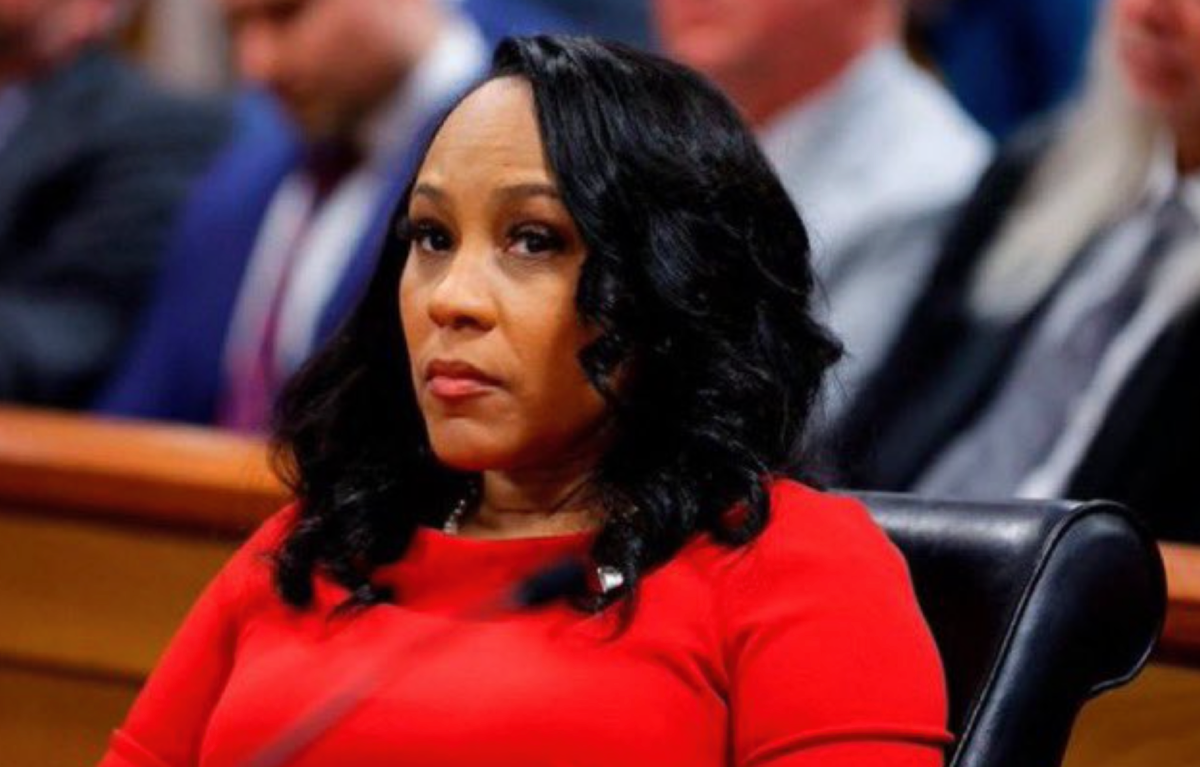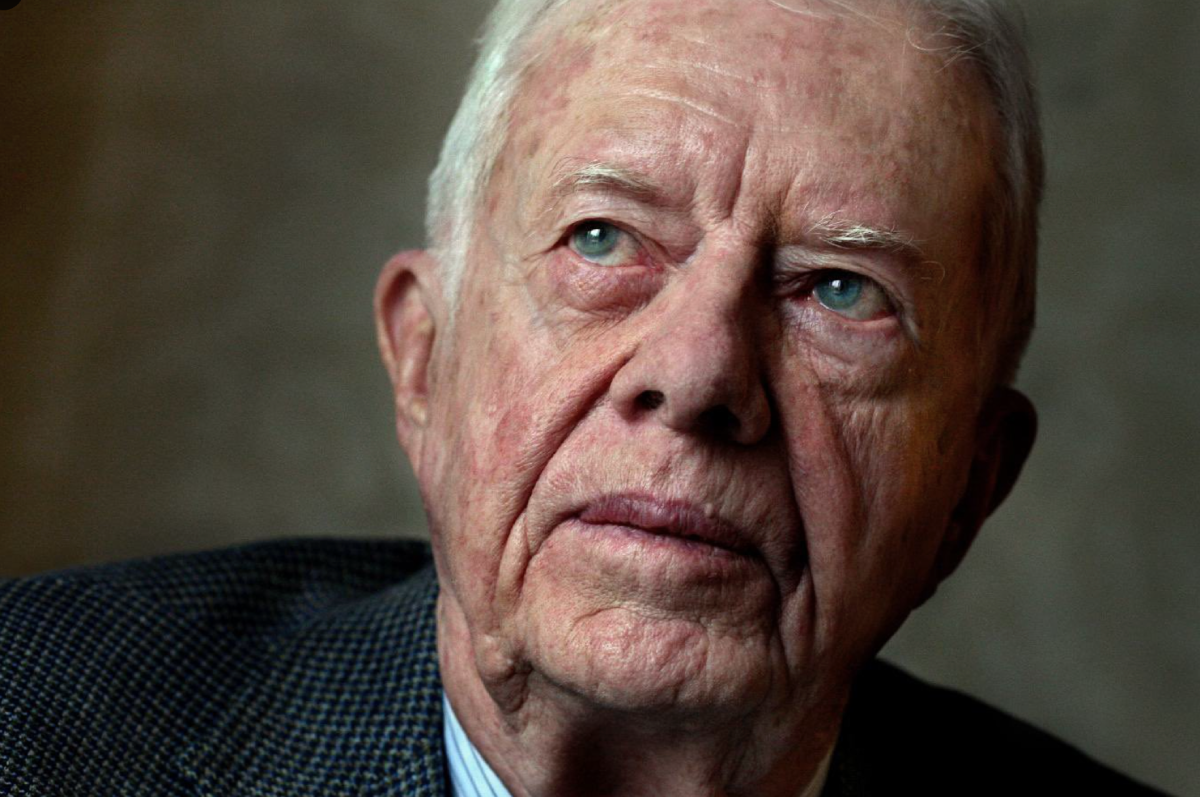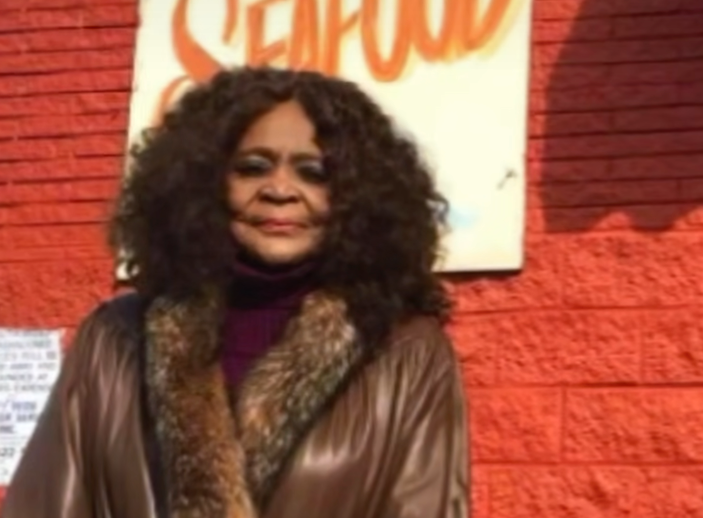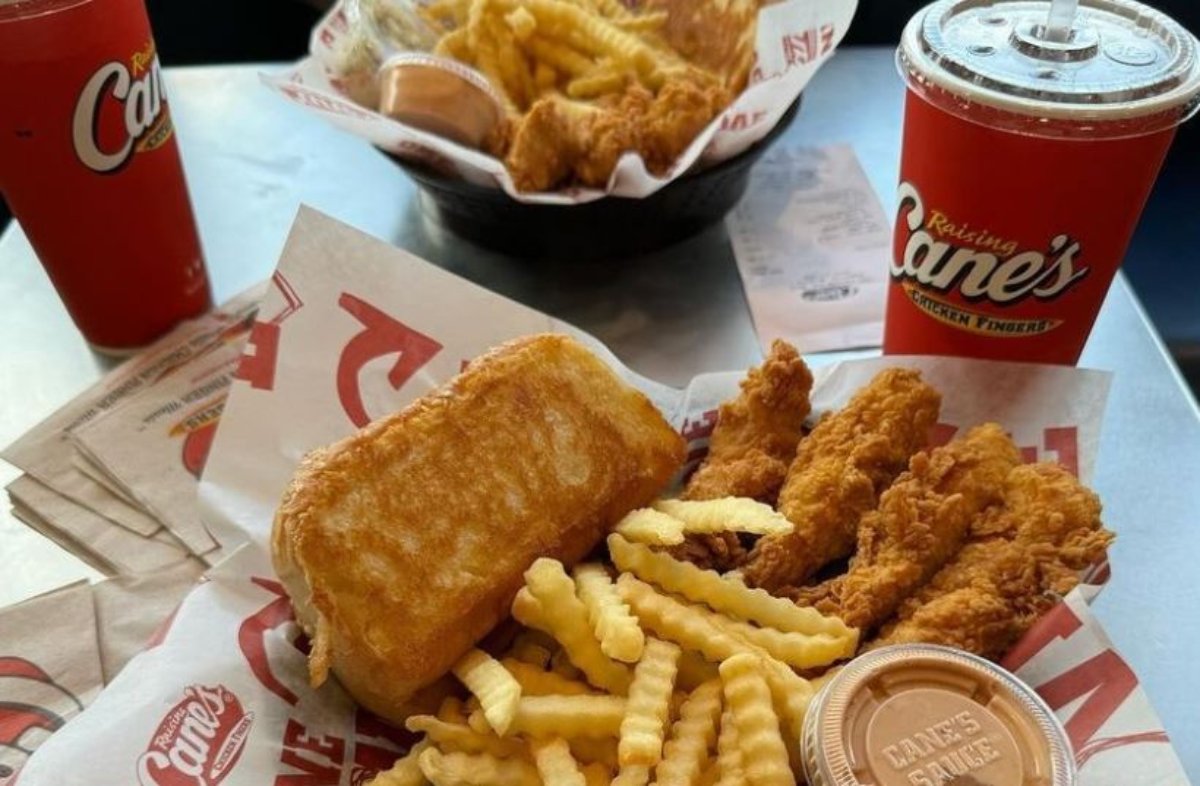-
Rihanna is one of the biggest music artists, but has become a cosmetics queen of late. Online or at in-person stores, you can Fenty products, including in the Atlanta area.
Rihanna is doing big business with her Fenty line of beauty products. The singer’s cosmetics company focuses on wide range of traditionally hard-to-match skin tones. The singer and entrepreneur recently bolstered her Savage X Fenty lingerie line, she makes most of her money from her cosmetics products.
While you can order Fenty Beauty online, there are also some stores in Atlanta that sell Fenty products.
Who Owns Fenty Beauty?
Fenty Beauty is owned by LVMH, which stands for Louis Vuitton Moët Hennessy. The corporation is a French holding multinational conglomerate taht specializes in luxury products. So how does Rihanna figure into all of this?
Rihanna owns an LVMH cosmetics brand called Fenty Beauty. Rihanna launches the brand on September 8, 2017.
Where To Find Fenty Beauty Products
1. Sephora
- In-Store: Available at all Sephora locations worldwide.
- Online: Visit Sephora’s website to browse the full Fenty Beauty collection.
2. Fenty Beauty’s Official Website
- Purchase directly from Fenty Beauty’s website.
- Exclusive offers and limited-edition products are often available here.
3. Ulta Beauty
- In-Store and Online: Fenty Beauty is now carried at Ulta locations and on Ulta’s website.
4. Boots (UK)
- Fenty Beauty is available at Boots stores and online for customers in the UK and select European countries.
5. Other Retailers and Locations
- LVMH-owned Outlets: Since Fenty Beauty is part of the LVMH group, you might find it in luxury department stores in some regions.
- Airport Duty-Free Shops: Fenty Beauty is often stocked in international airport stores.
6. Third-Party Online Platforms
- Amazon: Be cautious and ensure the seller is reputable. Here are some Fenty selections we found on Amazon:
Match Stix Matte Skinstick Amber

Fenty Skin Total Clean’r Remove-It-All Cleanser

- Other Beauty Retailers: Websites like BeautyBay or Harvey Nichols (UK) may stock Fenty products.
Find Fenty Beauty Products At These Atlanta Stores
Rihanna struck deals with Sephora stores to carry her products. She also has agreements with Puma and other brands.
Rihanna added to her business resume by recently launching a Fenty luxury fashion line that specializes in blazers and jackets. But people love her beauty line.
Here Are Atlanta Stores That Sell Fenty Beauty Products
Store Location Phone Number Address Bloomingdales Lenox Square (404) 495-2800 3393 Peachtree Rd NE, Atlanta, GA 30326 Sephora cosmetics Ponce City Market (404) 532-1595 650 North Avenue Atlanta, GA 30308 Sephora cosmetics Buckhead (404) 467-9565 3167 Peachtree Road NE Atlanta, GA 30305 Sephora cosmetics Lenox Square (404) 816-0123 3393 Peachtree Rd., NE Atlanta, GA 30326 Sephora cosmetics Cumberland Mall (678) 503-0000 1140 Cumberland Mall Atlanta, GA 30339 Sephora cosmetics Perimeter Mall (678) 731-9950 4400 Ashford Dunwoody Rd. Atlanta, GA 30346 Now that we’ve covered the where, you may have some thoughts on the what: What to buy at Fenty. Here are some of our faves:
Here’s What To Buy From Rihanna’s Fenty Beauty Products Line
- Fenty Beauty Flyliner Longwear Liiquid Eyeliner
- Gloss Bomb Universal Lip Luminizer
- Limited Edition Killawatt Foil Highlighter Palette
- Stunna Lip Paint Longwear Fluid Lip
- Galaxy Eyeshadow Palette
Learn what’s on sale at Lenox, Perimeter and other Atlanta malls here.
How To Cancel Savage Fenty Membership
If you want to cancel your Savage Fenty membership, you need to log in to your account online or contact a Savage Fenty customer service representatives at 1-855-728-2439.
The brand’s customer service representatives are available 24 hours a day, 7 days a week to assist. There is no cancellation fee.
Final Word
Rihanna is a mother now, but her first baby besides the music is Fenty.
Many people love Rihanna’s Fenty brand in Atlanta. While singer and entrepreneur recently bolstered her Savage X Fenty lingerie line, she makes most of her money from her cosmetics products.
Looking To Shop? Check Out The Best Malls in Atlanta
Along with the wonderful things to eat and do in Atlanta, there are also so awesome places to shop.
In addition to malls, many Atlanta boutiques and consignment shops have daily deals so that you can save money.
Atlanta’s retail scene continues to be a bright spot for the local economy — and that means more sales for everyone!
- Here are more articles from AtlantaFi.com you might like:
-
Fulton County District Attorney Fani Willis is seeking to overturn her disqualification from the Georgia election interference case against President-Elect Donald Trump and others.
Willis on Thursday, Jan. 9, 2024 petitioned Georgia’s Supreme Court to review a lower appeals court’s ruling that removed her from the case.
The Georgia Court of Appeals recently ruled that District Attorney Fani Willis and her office could no longer prosecute a case due to an “appearance of impropriety” stemming from her romantic relationship with special prosecutor Nathan Wade, whom she had appointed to lead the case. On Wednesday, Willis petitioned the Georgia Supreme Court to review and overturn that decision.
Willis’ filing argues that the 2-1 decision from the Court of Appeals “exceeded its authority,” establishing a new standard for disqualifying prosecutors and ignoring decades of legal precedent.
Even if the Supreme Court ultimately rules in Willis’ favor, it appears unlikely she will prosecute former President Trump, who is set to return to the White House on January 20. However, 14 other defendants in the case still face charges.
In her petition, Willis asks the state Supreme Court to determine whether the Court of Appeals erred in disqualifying her based solely on the “appearance of impropriety,” without evidence of an actual conflict of interest or prosecutorial misconduct. She also questions whether the appellate court overstepped by overriding the trial court’s discretion in the matter.
“No Georgia court has ever disqualified a district attorney merely for the appearance of impropriety without an actual conflict of interest,” Willis states in her filing. “And no Georgia court has ever reversed a trial court’s decision to retain a prosecutor based solely on such an appearance.”
Georgia Election Interference Case: Timeline
The investigation into alleged election interference by former President Donald Trump and his associates in Georgia has progressed through several key stages:
February 10, 2021: Fulton County District Attorney Fani Willis announced the initiation of a criminal investigation into efforts by Trump and his allies to overturn Georgia’s 2020 election results.
July 19, 2022: Court documents revealed that 16 individuals identified as “fake electors” were notified of being targets in the investigation.
August 15, 2022: Rudy Giuliani, Trump’s personal attorney, was informed that he was a “target” of the probe, following his presentation of debunked election fraud claims to Georgia state lawmakers in December 2020.
November 1, 2022: The U.S. Supreme Court declined Senator Lindsey Graham’s request to block a subpoena requiring his testimony before the special grand jury, related to his post-election communications with Georgia officials.
August 14, 2023: A Fulton County grand jury indicted former President Trump and 18 others, accusing them of conspiring to overturn Georgia’s 2020 election results.
August 25, 2023: All 19 defendants surrendered at the Fulton County jail and entered not guilty pleas.
December 2024: District Attorney Fani Willis was disqualified from prosecuting the case due to an “appearance of impropriety” arising from a romantic relationship with special prosecutor Nathan Wade.
January 8, 2025: Willis petitioned the Georgia Supreme Court to review and overturn the disqualification decision, arguing that the Court of Appeals overstepped its authority and disregarded legal precedent.
As of January 9, 2025, the Georgia Supreme Court has not yet announced whether it will review the case.
-
The old adage “Blondes have more fun” has been true in fate as well as fashion. Blonde wigs offer no exception.
Greek goddesses were portrayed with hair that shined like the sun with long flowing locks. You may want to know where you can buy the them.
Here Are The Best Blonde Wigs You Can Buy Locally
Here are stores that sell blonde color wigs near you:
Nearly all these products have the following three qualities in common:
- NATURAL LOOKING: These are the most human hair-like synthetic fiber (heat resistant up to 160°C), dyed with fashionable blonde color.
- They are sewed up on the highest quality Swiss lace, which provides the most natural looking and soft touch.
- HAND MADE WIG: These lace front wigs have been hand-tied by professional skilled workers who have taken their time.
No matter if you want golden blonde, wavy, straight, curly or mixed, it’s all here. Take a look at these blonde wigs from human hair:
EALGA Dark Brown Rooted Light Blonde 22 inches Heat Safe (Honey Blonde)
Ombre Blonde Glueless 2 Tone Color Light Brown Roots #12
eNilecor Short Bob Hair Wigs 12″ Straight with Flat Bangs Synthetic Wig+ Free Wig Cap (Light Blonde)
Short Ombre Blonde Wavy Wig for Women 14 Inch Shoulder Length
Best Blonde Wigs For Black Women
Yes, black women wear blonde wigs. It doesn’t matter whether the woman is light, dark-skinned, fair or what have you: They have a right to style themselves how ever they feel beautiful.
Of course, many black women choose to wear wigs that work with their shade, but “work” is a very subjective term. But the truth is that they’re spending tens of millions annually on wigs.
The Atlanta hair industry is one of the largest in the Southeast, with more than 8 million people getting groomed each month. Here are the best blonde wigs for black women:
BESFOR Short Bob Lace Front Wigs Human Hair Glueless Slightly Bleached Knots
Here’s what one reviewer says about this wig: “After reading multiple reviews about this wig I decided to purchase. Wig arrived fast. Color was 613 but very brassy, which can be fixed w purple shampoo. Hairline is preplucked and they did a very good job w the hair line.”
N&T Afro Short Curly Wigs for Black Women Synthetic Hair Ombre Blonde and Brown Wig
Here’s what one reviewer says about this wig: “You have to make this wig your own. It comes with tight spiral curls. If you want it to look more like an afro, you’ll have to pick out/separate the curls a lot (use fingers). If you do this, be careful. It’s synthetic and can give you that bad frizzy look if you do too much separating.”Blonde Lace Front Human Hair Wig Deep Part Brazilian Virgin Remy Hair Bleached
Here’s what one reviewer says about this wig: “I bought this wig for my wife who constantly enjoys changing her hair style and color. she fell in love with the quality of this hair. The hair is very soft no tangles. Took color extremely well! She did the water color method and the color is very beautiful and vibrant.”MISSWIG Short Kinky Curly Wigs for Black Women Blonde Mixed Brown Synthetic Wigs
Here’s what one reviewer says about Misswig: ” loved the hair. You can either wear it with the bangs or rolled to the side like I did. It’s a great option for vacation or just to change things up a bit. It’s not human hair so of course it will tangle a bit especially at the back but it is certainly worth the money.”
DÉBUT Lace Front Wig For Black Women Heat Resistant Fibers
Here’s what one reviewer says about this blonde wig: “I’m new to the whole wig-wearing scene, but I love this! Initially, I tried it on and was skeptical about how natural it would look… After a while of playing with it and trimming some bangs for a more natural hairline it is safe to say that this thing looks like it came out of my own head. Easy to fasten in the back and comfortable for everyday.”What Kinds Of Wigs Look Most Natural?
You may have apprehensions about wearing a blonde wig because it doesn’t quite match your skin tone or complexion. That’s totally understandable.
The most natural-looking wigs are typically those crafted from human hair. They should also be full lace or lace front, which blends in nicely with your natural hairline.
Can You Tell If Someone Is Wearing A Wig?
To the untrained eye, it is usually hard to tell if someone is wearing a wig, especially if the lace front or full lace is done right.
If you study where the hair parts in the crown of the head, you may be able to tell if someone is wearing a wig or not.
Final Word
Platinum blonde wigs have been a part of pop culture since the early 20th century. The best blonde wigs make you feel like a star and the center of attention.
Blonde wigs are a beautiful fashion statement about your hair, confidence and style. No matter what color your skin, rest assured that your outside appearance is temporary anyway, just like any wig or even real hair in most cases.Be you, be beautiful, be blessed.
For more great content about lifestyle and beauty, Subscribe to AtlantaFi.com to get all the latest Atlanta happenings delivered to your inbox.
-
Natural hair can be a wonderful blessing — when you treat it right. There’s no better way to manage your natural hair than to feed it the hair food it thrives on.
In this article, we’ll show you top products for natural hair with great reviews and that are affordable. Another thing that attests to their quality is the fact that they are all highly ranked.
Best Products For Natural Hair
Looking for beauty products like oils, conditioners that help your natural hair? Here are the best natural hair products for your money.
1. Shea Moisture Shampoo & Conditioner (13 Oz. & 16 Oz)
Shea Moisture Jamaican Black Castor Oil Combination Pack – Strengthen, Grow & Restore – Shampoo, 16.3 Oz, Conditioner 13 Oz. & Leave-In Conditioner 16 Oz.
2. BunzeeBands Adjustable Length Hairband
BunzeeBands Adjustable Length Hairband | Long Cushioned Headband Ties for Women with Thick, Braided, Kinky, Curly, Natural Hair | Extra Stretchy, No-Slip Design (Single, Black).
3. Hairfinity Ultimate Revival Kit
Here’s what one Amazon reviewer says about Hairfinity Ultimate Revival Kit: “I love this product! It is not heavy and does not make my hair feel weighed down. I have used for my wash and go (air dry) as well as for a blowout. I was pleased both times. There’s no residue build up and my hair was soft and manageable.”4. WOW Apple Cider Vinegar Shampoo & Hair Conditioner Set
WOW Apple Cider Vinegar Shampoo & Hair Conditioner Set – (2 x 16.9 Fl Oz / 500mL) – Increase Gloss, Hydration, Shine – Reduce Itchy Scalp, Dandruff & Frizz – No Parabens or Sulfates – All Hair Types.
Here’s what one reviewer says about Wow Apple Cider Vinegar Shampoo: “, I decided it wouldn’t kill me to try it and I did. After the first use I fell in love because of how soft my hair was! I even bleached my hair to get the red out and you can’t even tell it was bleached because of how healthy it looks! I’m not usually a returning customer for this kind of stuff, but this one is a must!!”
6. Carols Daughter Almond Milk Hair Care Gift Set for Damaged/Over-Processed Hair
Carols Daughter Almond Milk Hair Care Gift Set for Extremely Damaged/Over-Processed Hair. $15
Here’s what one reviewer says about Carols Daught Almond Milk Hare Care: “The first time I used this shampoo/conditioner duo IT SAVED MY LIFE. I had made the poorest of choices to save money and go to the hair cuttery for a revamp on my platinum blonde dye….The woman bleached my hair TWICE in one sitting and my hair was DESTROYED. I scoured the first drug store I came too and read every bottle label for moisturizing products and finally landed on this gem. Honest ingredients, reasonable price and most importantly – IT WORKS.”
Here’s what one reviewer says about this product. “Great for my hair which is fine and curly. Not heavy at all. Love this stuff! Keeps it moisturized. I don’t care for the bulkiness of the bottle and the small spay nozzle so I transferred it to a more comfortable spray bottle.”Hair Growth Formula For Longer, Stronger, Healthier Hair – Scientifically Formulated with Biotin, Keratin, Bamboo & More! – For All Hair Types – Veggie Capsules.
Here’s what one reviewer says about The Roots Naturelle Virgin Hair Fertilizer. ” tried the VIRGIN HAIR FERTILIZER conditioner for the fist time and my itchy scalp says thank you. The product smells good and goes on creamy and smooth. The tingle is immediately felt when I’m in the shower and is felt after leaving the shower. The intens itching of my scalp has decreased. The shedding has decreased. Will order more VIRGIN HAIR FERTILIZER.”
When it comes to hair products, it’s important to consider your specific hair type, concerns, and personal preferences. Here are some product categories that are often recommended for Black women’s hair.Looking to shop? Check out the best malls in Atlanta
Other Haircare Links To Check Out:
- These Hair Clippers Get The Job Done
- Best Products For Curly Hair
- Best Hair Straighteners For The Money
- Want That Golden Glare? 10 Blonde Wigs That Shine
Along with the wonderful things to eat and do in Atlanta, there are also so awesome places to shop.
In addition to malls, many Atlanta boutiques and consignment shops have daily deals so that you can save money.
Atlanta’s retail scene continues to be a bright spot for the local economy — and that means more sales for everyone!
Here are more articles from AtlantaFi.com you might like:
-
Former President Jimmy Carter passed away on Dec. 29, 2024, leaving behind not only a selfless legacy that bolstered Georgia, but the United States.
When Is Jimmy Carter’s Funeral?
The Carter estate has released the plans for Jimmy Carter’s funeral, which will be a national event:
Carter’s state funeral is set to take place in Washington, D.C., on January 9. In his honor, President Biden has directed that flags at all government buildings nationwide be flown at half-staff for 30 days.
Who Was Jimmy Carter?Jimmy Carter, born James Earl Carter Jr. on October 1, 1924, is a former President of the United States and a prominent humanitarian. His life and career span decades of public service, marked by his contributions to politics, diplomacy, and humanitarian efforts. Here’s an overview of his life and legacy:
Early Life and Career
- Born in Plains, Georgia, Carter grew up in a modest farming family.
- Graduated from the U.S. Naval Academy in 1946 and served as a Navy officer, working on nuclear submarine technology.
- Returned to Georgia in the 1950s to manage his family’s peanut farm.
Political Career
- Entered politics in the early 1960s, serving in the Georgia State Senate from 1963 to 1967.
- Elected as the Governor of Georgia in 1970, focusing on civil rights, government reorganization, and environmental issues.
Presidency (1977–1981)
- Elected as the 39th President of the United States in 1976 as a Democrat.
- Known for a presidency focused on human rights, energy policy, and diplomacy.
- Key achievements include:
- Camp David Accords: Mediated a peace agreement between Egypt and Israel.
- Panama Canal Treaties: Transferred control of the Panama Canal to Panama.
- Department of Energy and Education: Established these federal agencies.
- Focus on Renewable Energy: Advocated for reducing reliance on foreign oil.
- His presidency faced challenges such as high inflation, the Iran hostage crisis, and energy shortages.
Post-Presidency and Humanitarian Work
After leaving office, Carter became one of the most active and respected former presidents in U.S. history:
- Founded the Carter Center in 1982, promoting peace, human rights, and public health worldwide.
- Worked extensively on global health issues, eradicating diseases like Guinea worm disease.
- Volunteered with Habitat for Humanity, building homes for those in need.
- Awarded the Nobel Peace Prize in 2002 for his lifelong dedication to peace and human rights.
Personal Life
- Married to Rosalynn Carter since 1946, with whom he shares a deep partnership in his humanitarian efforts.
- Known for his humility, faith, and dedication to service, Carter remains a beloved figure, especially in his home state of Georgia.
Jimmy Carter is celebrated as a statesman who prioritized ethics, human rights, and the betterment of humanity throughout his life.
-
Fulton County District Attorney Fani Willis has been removed from Georgia election case against President-Elect Donald Trump. The effects of the ruling are wide-ranging.
A Georgia appeals court on Thursday ruled to disqualify Willis from overseeing the criminal election interference prosecution of President-elect Donald Trump and other defendants.
The ruling is a victory for MAGA Republicans, who have vowed to upend Willis’ case for political reasons. Months earlier, leading Republicans aligned with Trump tried to stop the indictments brought by Willis and have tried to reprimand her over the charges. Although as a county prosecutor, she’s not alone, Willis is the first prosecutor to bring charges against Trump related to the 2020 election.
Last September, Willis wrote a scathing letter to Ohio Congress Jim Jordan, a Republican that has attempted to derail her investigation.
Despite this decision, the Court of Appeals allowed the indictment against the defendants to stand, but it is unclear who will take the helm. What is clear is that the case won’t proceed anytime soon.
The charges stem from their alleged efforts to overturn Trump’s loss to President Joe Biden in Georgia’s 2020 election.
However, Trump’s defense attorney later argued that the court’s ruling regarding Willis effectively ended the case against the president-elect.
In response, Willis’ office filed a statement indicating that it planned to request the Georgia Supreme Court review and potentially overturn the appeals court’s decision to disqualify her from handling the case.
The appeals court’s decision reversed a ruling by Fulton County Superior Court Judge Scott McAfee, who had previously allowed Willis to remain on the case. Trump’s attorneys had argued that Willis should be disqualified due to concerns about her romantic relationship with Nathan Wade, the lead prosecutor she had appointed to handle the case.
In its ruling, the Court of Appeals stated that Judge McAfee’s remedy—allowing Willis to stay on the case as long as Wade withdrew—was insufficient.
“After carefully reviewing the trial court’s findings, we conclude that it erred by failing to disqualify DA Willis and her office,” the appeals court wrote.
The court added that the trial judge’s approach did not adequately address concerns about the appearance of impropriety during the crucial pretrial phase, when Willis held significant discretion over prosecution decisions and charges.
-
Rapper Young Thug successfully petitioned for milder probation terms that will allow him to return to Atlanta much sooner that originally planned.
Young Thug, real name Jeffrey Atkins, was granted permission to visit Atlanta for two weeks at a time, up to four times per year, starting in October 2027, according to new terms set by the judge.
When Can Young Thug Come Back To Atlanta?
Young Thug can return to visit his Atlanta home starting Oct. 31, 2027, only if he does not violate his probation over the first three years.
When he does come back, those visits are limited to up to two weeks at a time, up to four times per year, on a non-consecutive basis, according to the court order.Following a plea deal, Atkins was released from jail on Halloween 2024, which marked the end of the longest trial in Georgia history.
Video footage that night showed a dark sedan pulling off from the Fulton County jail with Young Thuginside.
As terms of his plea deal, Young Thug must also:
- Stay away from metro Atlanta for 10 years.
- Refrain from using any illicit drugs.
- Avoid association with any gang paraphernalia.
- Speak against drugs/gang violence four times a year.
Many people, including Young Thug’s father, did not agree with the state’s demand that his son stay away from Atlanta, effectively banning him from his hometown.
“I feel great that he’s going home, but by the same token, I wanted him to fight,” he said, referring to his son taking a plea deal. “As an adult, he has to make his own decision.”
-
The friends, family and community around Bankhead Seafood’s iconic owner Helen Brown Harden is mourning after her death was announced on Monday, Dec. 2, 2024.
“For more than 50 years, Ms. Harden shared a culinary treasure with our community, creating a beloved institution. As we recently celebrated the reopening of Bankhead Seafood by Mike and T.I., we’re reminded of Ms. Harden’s lasting impact on our city,” Atlanta Mayor Andre Dickens said in a statement. “Her legacy will live on, not only through her food but in the hearts of everyone who was touched by her dedication and vision in serving our community.”
Harden was on hand just two weeks ago when the famed Bankhead Seafood re-opened under the ownership of hometown entrepreneurs and rappers T.I. and Killer Mike.
The restaurant posted a tribute to Ms. Harden on Facebook, saying “It is with heavy hearts that we say goodbye to a true Atlanta legend, Mrs. Helen Harden, affectionately known to the neighborhood as ‘Mama.’ We extend our deepest condolences to the Harden family as we join in mourning this extraordinary woman who graced our lives and community with her unmatched kindness and love.
The message continued, “For over 50 years, Mrs. Harden nourished the city of Atlanta, both with her cooking and her boundless spirit. Her unwavering dedication and compassion touched countless lives, leaving an indelible mark on all who had the privilege of knowing her.”
Final Word
The black Atlanta restaurant community will no doubt miss Ms. Harden, but the great food continues. If you like that part of town, don’t sleep on College Park either.
If you like barbecue, see our list of the Best Atlanta BBQ Restaurants.
As for eateries below I-20, these Southside Atlanta restaurants have developed quite a following.
More Food Coverage:
Here Are The Best New Restaurants In Atlanta
-
Sola Salons Johns Creek, an upscale salon suites concept, is set to open its doors in the coming days and is celebrating the occasion by offering an invitation to the public to get a sneak peek.
The sneak peek, hosted by Sola Salons and local general manager Mike Balsamides will be on Monday December 9th at 11:00am – 2:00pm.
The opening of Sola’s newest salon in Johns Creek, Georgia, is located in Old Alabama Square at the crossroads of Roswell, Alpharetta and Johns Creek.
The new Sola Salons features a collection of boutique, move-in-ready salon studios with floor-to-ceiling walls and glass doors that fully close. This unique layout and intentional design allows beauty professionals to operate their individual businesses in complete privacy and customized one-on-one spaces.
The local team is excited to welcome beauty professionals in the area for a tour of the new salon and the opportunity to learn more about life at Sola Salons. You are invited to enjoy light snacks and beverages, pick-up some Sola swag and meet with a sheer sharpener on-site offering free sharpening for any interested beauty professionals who attend the event.
“We are thrilled to expand the Sola Salons family in Atlanta to the Johns Creek area. There are incredible possibilities for salon professionals with an entrepreneurial spirit to expand their businesses at Sola Salons, while still feeling like part of the thriving salon community in Atlanta” said Mike Balsamides, General Manager of Sola Salons Atlanta. “We’re excited to welcome the beauty professionals in the area to join the over 20,000 independent salon owners running their businesses at Sola Salons.”
Sola provides a turnkey environment for experienced hair stylists, cosmetologists, estheticians, nail technicians, barbers, waxers, med spa professionals, massage therapists, makeup artists, lash specialists, professional micro bladers, hair extension specialists, health and wellness professionals and more. Studios are equipped with:
- Oversized sliding/locking door
- Floor-to-ceiling sound-insulated walls
- Modern custom cabinetry and high-end hydraulic styling chair
- Full spectrum LED lighting with dimmers to emulate natural daylight
- Utilities and WiFi included in weekly rental fee
- On-site laundry facilities and a comfortable break room to relax between clients
- BookNow to help grow your clientele and operate your business
- Sustainability is at the forefront of design, construction and operations
- Unmatched service and support from a local management team
Since its inception in 2004, Sola has grown to more than 750+ locations throughout the U.S. and Canada. Sola is committed to industry leading innovation and a fun salon environment to better support its rapidly growing community of more than 20,000+ independent beauty professionals.
“As the dominant brand in the salon suites segment, we have created a turnkey solution for thousands of beauty professionals to explore a better life as an entrepreneur. We are driven by our desire to use real estate to help aspiring business owners achieve their dreams and live their best lives,” said Ben Jones, CEO of Radiance Holdings (parent company of Sola Salons). “With a wide variety of proprietary resources and tools, such as state-of-the-art technology and integrated marketing features, we ensure that our Sola beauty professionals are set up for long-term success from the very beginning.”
Where Is Sola Salons in Johns Creek?
Sola Salons Johns Creek is located at 3005 Old Alabama Square, Unit 410, Johns Creek, GA 30022. Here is a map to help you find it.
The salon offers 37 studios and 7,500 square feet of first-class amenities for salon professionals and their clients. A limited number of private suites are still available for rent. For more information or to take a tour, visit solasalons.com, or call 470-567-5583 or email inquiries@solaatlanta.com.
Check out the best hair salons in Atlanta. Check out our Beauty Page for other ways to get shaped up.
- Oversized sliding/locking door
-
There’s going to be a new fried chicken joint in Atlanta, and it punches above its weight in the Southeast. Raising Cane’s is expanding throughout Georgia, with plans to open in Midtown Atlanta as well in Cumming, Conyers and Kennesaw in 2025.
In Atlanta, Raising Cane’s will take over the spot where Krystal is now at the intersection of 14th Street and Northside Drive.
Raising Cane’s is a fast-food restaurant franchise known for specializing in chicken fingers, and it has grown into a popular chain with locations across the United States and internationally. Here’s an overview of the history of Raising Cane’s.
What Is Raising Cane’s Menu Known For?

Photo credit: Raising Cane’s/Instagram
Raising Cane’s is primarily known for its chicken fingers (look out, Chick-fil-A). The restaurant’s menu is simple and focused, offering high-quality, hand-battered, and fried chicken tenders as its main offering. Here’s what Raising Cane’s is particularly known for:
- Chicken Fingers: The restaurant’s main dish is its chicken fingers, which are freshly prepared, hand-breaded, and fried to a crispy golden perfection. These tenders are the foundation of their menu.
- Cane’s Sauce: Raising Cane’s has a signature dipping sauce, called Cane’s Sauce, which is a creamy, tangy sauce made with a secret recipe. It’s widely popular and often considered the perfect complement to their chicken fingers.
- Simple Menu: Unlike many fast-food chains that offer a broad variety of items, Raising Cane’s has a streamlined menu, focusing on just a few items: chicken fingers, crinkle-cut fries, coleslaw, and Texas toast. This simplicity allows them to focus on perfecting each item.
- Texas Toast: Their Texas toast, a thick slice of buttered and grilled bread, is another fan favorite, often served as a side dish with their chicken fingers.
- Crinkle-Cut Fries: Raising Cane’s serves crispy, crinkle-cut fries, which pair perfectly with their chicken fingers and Cane’s Sauce.
Raising Cane’s: A History
In 1996, entrepreneur Todd Graves opened the first Raising Cane’s location in Baton Rouge, Louisiana, near the Louisiana State University (LSU) campus. The restaurant’s concept was straightforward but effective: it specialized in high-quality, fresh chicken fingers, served with crinkle-cut fries, coleslaw, and their signature dipping sauce.
The restaurant’s slogan, “One Love,” emphasized the idea of focusing on one thing and doing it exceptionally well, which became the brand’s central philosophy.
The early success of the Baton Rouge location paved the way for expansion. By the early 2000s, Raising Cane’s began opening new locations in Louisiana and other southern states. The restaurant chain’s focus on offering a simple, limited menu of chicken fingers allowed them to streamline operations and maintain high food quality, which resonated with customers.
Today, the company remains privately owned by Todd Graves and a few other key executives. Its focus on chicken fingers and its commitment to quality, paired with its distinctive culture and customer experience, have made it a beloved brand in the fast-food industry.
Key Points About Raising Cane’s
- Founder: Todd Graves
- Founded: 1996 in Baton Rouge, Louisiana
- Signature Dish: Chicken fingers, crinkle-cut fries, coleslaw, and signature Cane’s sauce
- Expansion: Rapid national and international growth, with over 500 locations as of 2024
- Philosophy: “One Love” – focusing on doing one thing (chicken fingers) exceptionally well
- Employee Culture: Emphasizes employee satisfaction and leadership development
Final Word
Raising Cane’s is also planning to open more than 100 new locations in 2024 in new markets. The Baton Rouge-based fast-food chain is opening soon in the following markets:
- Atlanta — Raising Cane’s plans to open restaurants in Cumming, Conyers, and Kennesaw in late 2024, and its first intown location in West Midtown in spring 2026.
- Snellville –Raising Cane’s is moving forward with plans to open a restaurant in Snellville.
- Findlay — Raising Cane’s has submitted a site plan for a new location in Findlay.
- Boston — Raising Cane’s plans to open at least three new locations in Greater Boston, including one at 101 Arch St in Downtown Crossing.
- Michigan — Developers are considering a Raising Cane’s location near the corner of Milham Avenue and Westnedge Avenue in Portage.
Chicken tenders are about to explode in popularity with the entry of Raising Cane’s to the Atlanta fast-food market. For a more full-service experience, check out the best places to eat in Midtown Atlanta.
More From AtlantaFi.com:




























